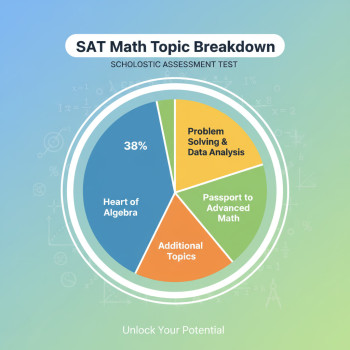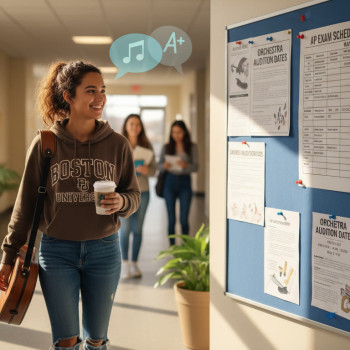Why tracking SAT score trends matters — and why you should care
Applying to an Ivy League school feels like aiming for the top of a very tall mountain. Scores, grades, essays, activities — every piece matters. But among those pieces, SAT performance often functions like a compass: it tells colleges whether you have the quantitative and evidence-based reading skills they look for, and it helps you and your family set realistic targets, plan test prep, and allocate time and energy effectively.
This post is written for students and their parents who want a clear, practical, and emotionally sane way to follow score trends for Ivy League admissions. We’ll cover where to get reliable data, how to visualize trends, which caveats to keep in mind, and a repeatable tracking template you can use over months or years. Along the way I’ll offer real-world examples and explain how personalized tutoring — like Sparkl’s 1-on-1 guidance, tailored study plans, expert tutors, and AI-driven insights — can fit naturally into this process when you need targeted improvement.
Set expectations: what score trends can and cannot tell you
What tracking reveals
- Direction of change: Are admitted-student SAT medians rising, falling, or stable over recent years?
- Target ranges: Typical mid-50% ranges (25th–75th percentiles) give useful targets for aiming higher or confirming reach/match/safety status.
- Test policy context: Whether a school is test-optional, test-blind, or test-required affects how heavily scores are weighted.
- Relative competitiveness: Comparing multiple schools shows how score expectations differ even within the Ivy League.
What tracking cannot do
- Predict admission for an individual applicant — SAT is only one factor among many.
- Replace the need for a holistic application strategy that includes essays, recommendations, extracurriculars, and demonstrated interest.
- Provide absolute thresholds that guarantee admission — selective schools use many qualitative filters.

Where to find accurate, current data
Reliable trend-tracking depends on using the right sources. Here are the places to check regularly:
- College Board & BigFuture resources — official score structure, benchmarks, and college pages that publish admitted students’ score ranges or medians for many schools.
- Individual university admissions websites — many Ivies publish class profiles with median SAT scores, score ranges, and the percentage of students who submitted scores in a given cycle.
- K-12 and school reporting portals — some school counselors have access to aggregate reporting that shows how their graduates performed over time.
Action step: Save the admissions profile page for each Ivy you’re interested in. Revisit them annually (or each admission cycle) and archive the numbers you find so you can spot movement across years.
How to build a trend-tracking system (step-by-step)
Step 1 — Choose the metrics you’ll track
Pick a small number of meaningful metrics. Too many variables will make the project noisy. Start with these:
- Median admitted SAT / total score (or mid-50% range)
- Percent of admitted students who submitted scores (important in test-optional eras)
- Any reported section medians if available (Math vs. Evidence-Based Reading & Writing)
- Number of applicants and admit rate (contextualizes score movement)
Step 2 — Collect baseline data
Go to each Ivy’s admitted-student profile and capture the most recent three years of available numbers. If a school stopped publishing SAT medians in a test-optional year, note whether they published the percent submitting scores instead.
Step 3 — Use a simple spreadsheet to visualize trends
Create columns for year, median score, 25th percentile, 75th percentile, % submitting, applicants, and admit rate. Then plot the median column on a line chart and, if you like, add a shaded area between the 25th and 75th percentiles to show the mid-50% range.
Step 4 — Interpret movement, not just numbers
Ask these questions when medians shift:
- Is the median rising because more high-scoring students applied, or because fewer lower-scoring applicants were admitted?
- Did a change in test policy (e.g., reinstating required scores) precede the movement?
- Is a spike in applicants linked to a particular recruiting initiative or a recent news event?
Example tracking template (use this as a starter table)
Below is a sample table you can copy into a spreadsheet. The numbers are illustrative and demonstrate how to organize the data and spot trends. Replace them with the actual values you gather from official college pages.
| School | Year | Median SAT | 25th–75th (mid-50%) | % Submitted Scores | Applicants | Admit Rate |
|---|---|---|---|---|---|---|
| Example Ivy A | 2022 | 1500 | 1460–1540 | 75% | 40,000 | 5.2% |
| Example Ivy A | 2023 | 1510 | 1470–1545 | 68% | 42,000 | 4.9% |
| Example Ivy A | 2024 | 1525 | 1480–1550 | 80% | 44,500 | 4.6% |
How to read it: If medians rise while percent submitted rises, a school may be receiving stronger test-credentialed applicants. If medians rise while % submitted falls, results can be skewed by a smaller subset of high-scoring submitters. Context matters.
Practical strategies to track trends without getting overwhelmed
1. Automate a quarterly check-in
Set aside one hour every quarter to visit the saved pages and update your table. Admissions data generally updates once per application cycle, so quarterly checks keep you on top without wasting time.
2. Focus on meaningful moves (not noise)
Tiny fluctuations of 5–10 points aren’t meaningful; look for shifts of 20+ points in the median or substantial changes in the % submitting. Also watch for system-level changes (policy about testing) that explain abrupt moves.
3. Combine numbers with qualitative signals
Pay attention to admissions messaging, outreach programs, or new majors. A school launching a big new engineering center or financial aid initiative may attract different applicant profiles — and that can influence score trends.
How to interpret score trends in the context of test-optional policies
The recent era of test-optional admissions changed the data landscape. Many selective schools temporarily accepted applications without test scores, and some later returned to requiring or strongly recommending scores. That means:
- Median SATs reported in test-optional years may reflect only the subset of applicants who chose to submit scores, often raising medians artificially.
- One useful metric is the percent of admitted students who submitted scores — a low percentage indicates medians may not reflect the whole admitted class.
- Over time, if a school reinstates score requirements, medians may shift toward the long-term historical average; tracking both policy changes and medians together clarifies the story.
Realistic target-setting for students: translating trends into action
Once you have trend data for your chosen Ivies, convert that into a personal target:
- If your current SAT is well below the 25th percentile of the mid-50% range, treat the school as a reach unless you can realistically close the gap through prep and other application strengths.
- If you’re inside the mid-50% range, you’re competitive for test scores — focus on essays, recommendations, and distinct extracurriculars to stand out.
- If you’re above the 75th percentile, you have a test-score advantage — maintain that while sharpening other parts of your application.
Example: If a target Ivy’s mid-50% is 1480–1550 and your practice test average is 1420, make a plan to close 60+ points with targeted work on the weakest section. That’s where structured, personalized tutoring shines: Sparkl’s tailored study plans and 1-on-1 guidance can help you focus on high-yield skills and build exam confidence efficiently.
How to use practice data to forecast realistic score gains
Don’t wait for a single official score to decide strategy. Track your test practice history (official practice tests and adaptive online tests) and calculate rolling averages. Consider these rules of thumb:
- Consistent practice with targeted review often yields incremental gains of 20–60 points per 6–8 weeks for motivated students.
- Big jumps (100+ points) are possible but usually require a mix of strategy changes, focused content study, and timed-practice refinement.
- Work with a tutor or coach to diagnose whether gains are plateauing due to content gaps, timing issues, or test-taking strategy. Personalized plans that address root causes produce the most reliable improvements.
Tracking trends across the Ivy League — comparative approach
Seeing how the Ivy League moves as a group can be useful. Don’t assume all Ivies move together; some departments or schools within the universities may emphasize different strengths (e.g., engineering applicants might need stronger math scores). Your comparative tracking should include:
- School-level median trends to spot divergences
- Program-specific signals when available (e.g., engineering vs. arts)
- Policy flags: when a school announces test policy changes, mark the date in your timeline
Sample 12-month action plan tied to trend tracking
Below is a practical schedule that mixes data collection with prep milestones. Adjust the timeline to your test dates and deadlines.
- Month 0: Capture baseline medians and % submitting for your target Ivies. Take a full-length, timed practice test to establish a baseline.
- Months 1–3: Focus on targeted content gaps; review errors and set weekly skill targets. Update practice-test rolling average every two weeks.
- Month 4: Revisit trend pages for any updated class profiles. Adjust target if medians moved meaningfully.
- Months 5–8: Simulate test conditions monthly; refine timing. Consider 1-on-1 tutoring sessions for persistent weak spots (math sections, reading comprehension strategies, timing).
- Months 9–12: Finalize test date, practice full tests under strict conditions, and polish essays and supplements. Confirm the latest published medians and % submitting before final application decisions.

Common pitfalls and how to avoid them
Pitfall 1: Cherry-picking numbers
A single year’s median can be misleading. Always use a multi-year view and record policy changes that might have caused anomalies.
Pitfall 2: Overemphasizing SAT at the expense of the rest of the application
Even if you track and hit score targets, colleges evaluate essays, recommendations, coursework, and extracurriculars. Think of SAT improvement as necessary but not sufficient — a strong balanced application wins.
Pitfall 3: Ignoring percent-submitted data in test-optional seasons
A high median with a low percent submitted likely reflects a self-selected subset of applicants. Always record the % submitted alongside medians.
When to seek outside help
Some students make excellent progress alone; others benefit greatly from structured support. Consider expert help if:
- Your practice scores are plateauing despite consistent work.
- You need a focused plan to close a specific gap (e.g., number of math topics, timing on reading).
- You’d benefit from accountability, feedback, and a customized plan that adapts as your scores change.
Personalized tutoring, like Sparkl’s, can complement your tracking. A tutor can analyze your practice history, suggest targeted drills, help you prioritize the highest-leverage changes, and use AI-driven insights to personalize study sessions — all of which increase the efficiency of your prep and make trends more actionable.
Putting it all together: a case study
Meet Maya (example). She’s a high school senior applying to multiple Ivies. Her baseline SAT is 1450, and her target school’s published mid-50% from the last three years hovered around 1490–1550 with percent-submitted varying by year. Maya uses the trend tracker and notices:
- Median nudged up 10 points last year while % submitted increased substantially — suggesting more high-scoring students submitted results.
- Two of her other target Ivies showed stable medians but decreased % submitted, signaling those medians may overstate the whole class.
Maya focused on a targeted plan: weekly timed reading sections, daily math concept review, and monthly full-length tests. After eight weeks she improved her rolling practice average to 1490. Her tutor from Sparkl identified that timing on multi-step math items cost her points and designed short micro-lessons that led to consistent improvement. Maya continued tracking medians and kept her applications balanced with strong essays highlighting her research experience — not relying on scores alone. The trend data helped her decide where to reallocate time and which schools to prioritize for early applications.
Checklist: What to do this week to start tracking
- Choose 4–6 Ivy targets and save their admissions profile pages.
- Create a spreadsheet with columns for year, median SAT, mid-50% range, % submitted, applicants, and admit rate.
- Capture data for the last 2–3 years and plot medians on a line chart.
- Take a timed official-practice SAT and record the result as your baseline.
- Decide whether you want guided help — if so, plan a trial session with a tutor who offers personalized plans and regularly reviews your practice data.
Final thoughts: keep perspective and focus on steady progress
Tracking score trends is a powerful tool — it helps you set realistic targets, make smarter prep decisions, and reduce anxiety by turning fuzzy worries into a clear plan. But remember: admissions are personal and holistic. Use trends as a compass, not a crystal ball.
If you want help turning your tracking into action, consider a short consultation with a tutor who will audit your practice history, outline a tailored study plan, and coach you through practice cycles. Services that combine experienced tutors with AI-driven insights — such as Sparkl’s personalized 1-on-1 approach — can accelerate progress efficiently and keep you accountable without losing sight of the rest of your application.
Start tracking. Be patient. Focus on steady, measurable improvement. With the right data and a thoughtful plan, you’ll be better prepared to present the strongest possible application to the Ivies — whatever the numbers say next year.















No Comments
Leave a comment Cancel